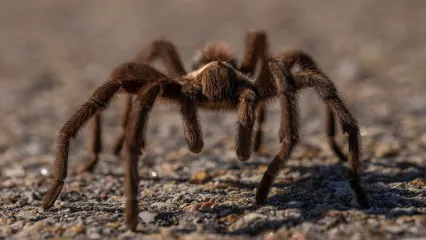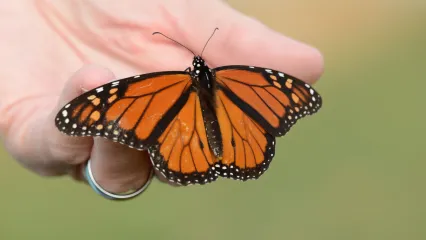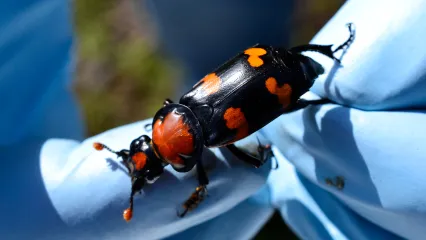
Description
The large hairy spiders that we see in Oklahoma are known to us as the Oklahoma brown tarantula. But other states make claim to them, too. Texas and Missouri have their own names for this arachnid: the Texas brown tarantula and the Missouri tarantula. This particular tarantula also can be found in Kansas, Arkansas, Louisiana and parts of Mexico.
Whatever you want to call it, the fact remains that it's the same spider in every state. But here, we are going to call it the Oklahoma brown tarantula (Aphonopelma hentzi). The Oklahoma brown tarantula is one of 30 species of tarantulas found in the United States. Worldwide, more than 800 tarantula species have been documented. The tarantula is not a typical web spinner; they do not weave aerial webs to trap prey. Instead, they burrow into the ground to make a home for themselves, and they line their home with webbing to prey on grasshoppers, crickets and other similar insects. Like most hunting spiders, the Oklahoma brown tarantula hunts at night. They line the entrances of their burrow with silk to serve as an alarm system for potential predators.
But most people would say that the tarantula's best defense is being downright scary-looking. That scary look has created a fairly common phobia of the tarantula for many people. But contrary to popular belief, the Oklahoma brown tarantula is actually a relatively docile creature. If provoked enough, the tarantula will stand on its back legs and show its fangs to try intimidating whatever is threatening it. The spider has venom that is toxic to small animals. But the venom is not known to be life-threatening to people.
The next time you see a tarantula in Oklahoma, be assured that you probably scare it more than it should scare you. And if you are asked what to call the tarantulas around here, it's the Oklahoma brown tarantula.
Size
The Oklahoma brown tarantula can weigh from 1 to 3 ounces when fully grown, and they can grow a leg span of 4 to 5 inches.
Habitat
Tarantulas in general live in arid, desert regions, but they can also live in a damp forest environment. The Oklahoma brown tarantula finds shelter near small rocks and logs that they can burrow underneath. They can occasionally be spotted on a roadway and close to houses when the males migrate in search of mates. This usually starts occurring in September. Although tarantulas can be seen throughout Oklahoma, the southwestern part of the state seems to be more common for the arachnid due to its arid environment.
Life Cycle
The life cycle of the Oklahoma brown tarantula can vary greatly. Most males do not live for more than a year, however some females can survive up to three decades. When female tarantulas reproduce, they line the walls of their burrow with eggs and stay close by until the young tarantulas emerge. Young tarantulas go through a molting process several times as they grow. As the tarantulas outgrow their exoskeleton, they shed it. Older tarantulas might molt only once every two years.
After molting, the tarantula obtains a new coat of camouflage. It sports multiple shades of brown and tan on its body. The shade of brown differs at the legs, carapace and abdomen. Most of the tarantula's body is covered with thin brown hairs that act as a defense mechanism against predators such as snakes, coyotes, foxes and even some birds. The tarantula's hairs can trigger an allergic reaction in its attackers, causing an itchy effect.


